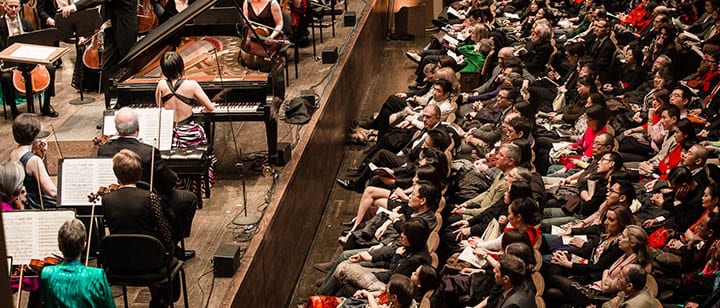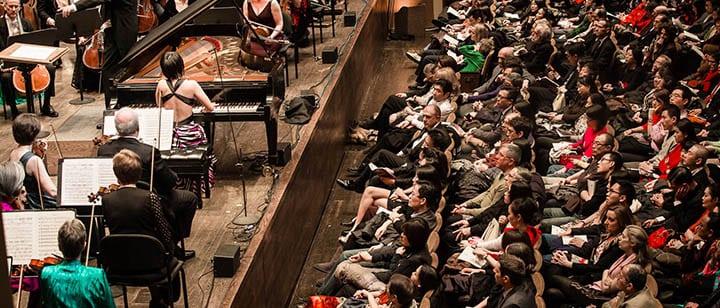 Staring at the Circle of Fifths and memorizing key signatures isn’t the only way to learn music theory! Here, Brooklyn, NY teacher Liz T. shares some creative ideas to revive your learning…
Staring at the Circle of Fifths and memorizing key signatures isn’t the only way to learn music theory! Here, Brooklyn, NY teacher Liz T. shares some creative ideas to revive your learning…
Music theory is a very important part of your musicianship, whether it be mastering ear training, harmony, or sight reading. No matter what instrument you play or what styles you enjoy, those who learn music theory grow further as musicians. A solid knowledge can help you improve your performance, technique, composition, and analysis of music!
For some, learning music theory can be very dry, or perhaps even overwhelming at first. Fortunately, it doesn’t have to be all about sitting down with a theory book and memorizing scales, chords, and key signatures. There are many other interesting ways you can improve your musicianship. Here are some ideas to try that incorporate both learning and having fun!
1. Learn to play other instruments
If you’re a singer, then learning the piano is vital to becoming a well-rounded vocalist. And if you’re a pianist, then being able to sing comfortably will improve your piano skills, believe it or not! The more instruments you know how to play and read the music for, the easier it will be for you! You can also try learning an instrument that plays in bass clef if you play an instrument in treble clef, to work on those transposing skills!
2. Listen to new material
I recommend attending many concerts of vocalists, choirs, orchestras, and big bands, to train your ear on what all the different voices and instruments sound like. The only way to really develop your musical ear, and to start working toward perfect pitch, is by listening to the different instruments.
3. Analyze your favorite songs
If you’re up for the challenge, find the sheet music for one of your favorite songs, and analyze it. For example, what are the tempo markings? What key signature is it in? Are the chords major or minor? Then, I dare you to sing the song only in solfege, not the lyrics, on the correct pitches. This is going to improve your theory and musicianship immensely! Even if you think it’s time consuming, it is very good practice. As a performer, knowing the music you’re singing or playing inside and out is key!
4) Find visuals
If you’re a visual learner like I am, consider placing music theory posters around your music room, or somewhere you can always see them. There are also clocks that represents the Circle of Fifths (like this one); every time you look at it, you will start to memorize the key signatures!
5) Incorporate movement
I encourage dancing and movement when learning music theory, especially with my younger students. This can really help you gain a sense of musicality and feel the rhythm in your body. Freeze dancing, ballet, tap, zumba, and yoga are all great ways to be lyrical with your body. And by dancing regularly, your body will begin to internalize the rhythm automatically, so that when it’s time for sight reading and performing rhythms it’s going to second nature for you!
6) Try composing a song
I also encourage you to try composing music on your instrument! Write your own chord progressions, melody, and rhythms without thinking too much about it, and remember that it’s okay to start simple and to make mistakes. Just write whatever comes to mind. Then start to analyze what you have just written, and you may be surprised with the masterpiece you have created!
I highly recommend trying out these ideas as you learn music theory — they are fun, creative, and much more hands-on than staring at a book!
 Liz T. teaches online singing, acting, and music lessons. She is a graduate of the Berklee College of Music with a B.M in Vocal performance and currently performs/teaches all styles of music including Musical Theater, Classical, Jazz, Rock, Pop, R&B, and Country. Learn more about Liz here!
Liz T. teaches online singing, acting, and music lessons. She is a graduate of the Berklee College of Music with a B.M in Vocal performance and currently performs/teaches all styles of music including Musical Theater, Classical, Jazz, Rock, Pop, R&B, and Country. Learn more about Liz here!
 Photo by blog.asianinny
Photo by blog.asianinny
Suzy S.
